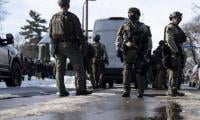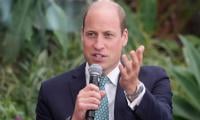The Pope in Iraq
The four-day tour of war-torn Iraq by Pope Francis is a significant event at several levels. Undertaken amidst serious security concerns and at the height of the coronavirus pandemic, the first-ever papal visit has brought to the fore the reality of present-day Iraq, as the country struggles to emerge from the bouts of violence perpetrated by the United States as well as the dreaded Islamic State (IS).
To begin with, Iraq is back to the mainstream of global conversation. The coverage of the tour has highlighted the formidable challenges Baghdad has faced ever since the Bush administration committed the monstrous folly of attacking Iraq in 2003.
The coalition forces may have taken out Saddam Hussein. The consequences of the Western military misadventure have, however, proven to be far deadlier than anticipated. The aftermath of Saddam’s fall has led to the transformation of the geostrategic landscape of the Middle East. The unleashing of the dynamics, deep and impactful as they are, has deepened the fault-lines and ushered in a new era of competition and rivalry for regional dominance.
Received by the Iraqi prime minister with the red carpet rolled out and people lining up the roads, 84-year-old Pope Francis emphasized Iraq’s identity as the “cradle of civilization”, a clear reference to the country’s religious diversity and rich heritage.
The engagements of the Pope were structured in a manner as to send a symbolic, yet powerful, message to a world that has increasingly been shaken by the faith-based violence and a sense of deep acrimony, fuelled by suspicions and hatred of each other.
Pope Francis rightly condemned the senseless violence and called for an immediate end to extremism. Walking through the streets of once-thriving Mosul’s Old City that boasted of ancient mosques and churches standing in complete harmony, the pontiff, visibly moved by the sight of the destroyed buildings and desolate streets, reiterated his conviction that “fraternity is more durable than fratricide.”
Mosul which has borne the brunt of heavy fighting between the Iraqi security forces and IS fighters is a picture-perfect of the destruction of not just the physical infrastructure but also of the deep bonds of captivating culture, rich civilization and faiths.
In a visit to the ancient site of Ur, the birthplace of Hazrat Ibrahim (ra), the prophet revered equally by Muslims, Christians and Jews, Pope Francis made the most telling statement. He condemned violence perpetrated in the name of God as the “greatest blasphemy”. He went on to add that “Hostility, extremism and violence are not born of a religious heart: they are betrayals of religion. We believers cannot be silent when terrorism abuses religion.”
This powerful defence of religion comes at a time when different faiths, mainly Islam, have been held responsible for spawning violence and terrorism in the world. The narrative against religion has been woven in a manner so as to shield the role of the industrial-military complex, and powerful political establishments in causing armed conflicts in pursuit of grand strategic and economic objectives. The peculiar framing of discourse legitimizing the ‘war on terror’ and justifying the attack on Iraq is a case in point.
Another noteworthy aspect of the anti-religion campaign is the keenness to unquestioningly accept a view that claims to justify violence in the name of God. The permeation of such an attitude, particularly in the West, has given birth to the stigmatization of an entire Muslim community that has found itself on the wrong side of mainstream public opinion that has been shaped by populist political discourses. The acts of terrorism perpetrated by the likes of Al-Qaeda and IS have been used handily in support of such framing as denounces Islam.
One of the prime objectives of the papal visit was to express solidarity with the fast-dwindling Christian population in Iraq. In a span of almost two decades from 2003 onward, the number of Christian Iraqis has reduced from around 1.5 million population to a little over 250,000 people. The drastic fall in numbers caused by armed conflict, migration, and the targeting of the community by the IS has brought down the population from 10 percent during the mid-20th century to nearly one percent now.
Enunciating that the religious diversity of Iraq was a “precious resource on which to draw, not an obstacle to eliminate”, the Pope urged a greater role for the members of the Christian community in the country’s public life. He added that “the age-old presence of Christians in the land, and their contributions to the life of the nation constitute a rich heritage that they wish to continue to place at the service of all.”
The chief highlight of the historic visit was an important meeting between Pope Francis and influential Shiite leader Ayatollah Sistani in the city of Al-Najaf. The 90-year-old Iraqi leader has been pivotal to Iraq’s successful fight against IS whose religious edict resulted in swelling the ranks of the Iraqi forces. His support is considered critical to the longevity of the governments in Iraq.
A supporter of religious minorities, Ayatollah Sistani has been a defender of their political rights and believes in the separation of politics from religion. The meeting between two respected religious leaders conveyed a message of unity and inclusion.
While the Pope was grateful to the top Iraqi cleric for “speaking up – together with the Shiite community – in defence of those most vulnerable and persecuted amid the violence and great hardships”, Sistani’s office described him as stating that Iraqi Christians deserve to “live like all Iraqis in security and peace and with all constitutional rights.”
The show of unity with the mainly Shia-majority country comes on the heels of a similar initiative led by the Pope when a joint declaration with the Sunni leaders and scholars of Al-Azhar University was signed in Abu Dhabi in 2019.
The papal visit to Iraq, a country torn by extremism, terrorism and sectarian conflicts, represents a solid public outreach effort to help bridge the religious divide, promote interfaith dialogue, and convey a sense of reassurance to the Iraqis in general and the members of the Christian community, in particular. More than that, it aims to build bridges, promote pluralism and highlight convergences between the followers of Islam and Christianity.
Pope Francis’ assertion that we are “descendants of Abraham and the representatives of different religions” and that “like the great Patriarch, we need to take concrete steps” is carefully employed to appeal to the common roots of both Muslims and Christians. Ibrahim Al-Marashi, while writing for the Al Jazeera website, stated that “By using Abraham’s birthplace as a setting for his speech, the Pope stressed the concept of the Abrahamic faiths as a single tradition.”
There was a time in the early 1990s when the concept of the clash of civilizations found traction after the Western model of liberal democracy vanquished communism and singled out Islam as the next adversary.
While there were some misgivings about the framing of the discourse in terms of ideological binaries, what followed the catastrophic events of 9/11 renewed the conversation. Those purporting to speak on behalf of Muslims leveraged the ‘clash of civilizations’ argument to attract people to their ranks in what they interpreted as a holy war.
The notion of the faith-inspired clash has got a new lease of life as the dynamics of popular nationalism, often expressed in religious terms, shape the terms of engagement between Muslims and the host Western governments.
In this background, the visit of Pope Francis not only inspires hope but also offers a blueprint of a more formal engagement that can be institutionalized to challenge the theory of the clash of civilizations and replace it with that of dialogue among civilizations.
The writer, a Chevening scholar, studied International Journalism at the University of Sussex.
Email: amanatchpk@gmail.com
Twitter: @Amanat222
-
 Minneapolis: ICE Officer Fires Bullet After Migrant Attacks With A Shovel
Minneapolis: ICE Officer Fires Bullet After Migrant Attacks With A Shovel -
 Prince William Gets 'mobbed' By Animals During Rural Engagement
Prince William Gets 'mobbed' By Animals During Rural Engagement -
 Angelina Jolie Finally Escaping L.A.?
Angelina Jolie Finally Escaping L.A.? -
 Jodie Foster Reflects On Harsh Reality Of Why She Escaped Sexual Abuse As Actress
Jodie Foster Reflects On Harsh Reality Of Why She Escaped Sexual Abuse As Actress -
 Matthew McConaughey Takes Legal Action To Save THIS Iconic Phrase From AI Misuse
Matthew McConaughey Takes Legal Action To Save THIS Iconic Phrase From AI Misuse -
 Prince Harry, Meghan Markle To Have Baby In 2026?
Prince Harry, Meghan Markle To Have Baby In 2026? -
 Bella Hadid Steals The Spotlight At 'The Beauty' Premiere
Bella Hadid Steals The Spotlight At 'The Beauty' Premiere -
 Taylor Swift 'worst Photos': Singer's Not-so-perfect Moments Spark Debate
Taylor Swift 'worst Photos': Singer's Not-so-perfect Moments Spark Debate -
 Arizona Mother Traces Missing Son Living In Neighbour’s Home After Killing Hm
Arizona Mother Traces Missing Son Living In Neighbour’s Home After Killing Hm -
 OpenAI Launches ChatGPT Translate To Rival Google Translate
OpenAI Launches ChatGPT Translate To Rival Google Translate -
 Top AI Themes Poised To Shape 2026: Here’s How
Top AI Themes Poised To Shape 2026: Here’s How -
 Meghan Markle Accused Of Stealing 'bookmark' Idea
Meghan Markle Accused Of Stealing 'bookmark' Idea -
 Leonardo DiCaprio Changes His Stance On THIS To Remain 'his Handsome Self'
Leonardo DiCaprio Changes His Stance On THIS To Remain 'his Handsome Self' -
 Girl Dies After Years Of Alleged Starvation By Mother In West Virginia
Girl Dies After Years Of Alleged Starvation By Mother In West Virginia -
 Here’s How Many Under-16 Social Media Accounts Were Removed In Australia
Here’s How Many Under-16 Social Media Accounts Were Removed In Australia -
 Drew Barrymore Gets Candid About The Words That Haunted Her Childhood
Drew Barrymore Gets Candid About The Words That Haunted Her Childhood



